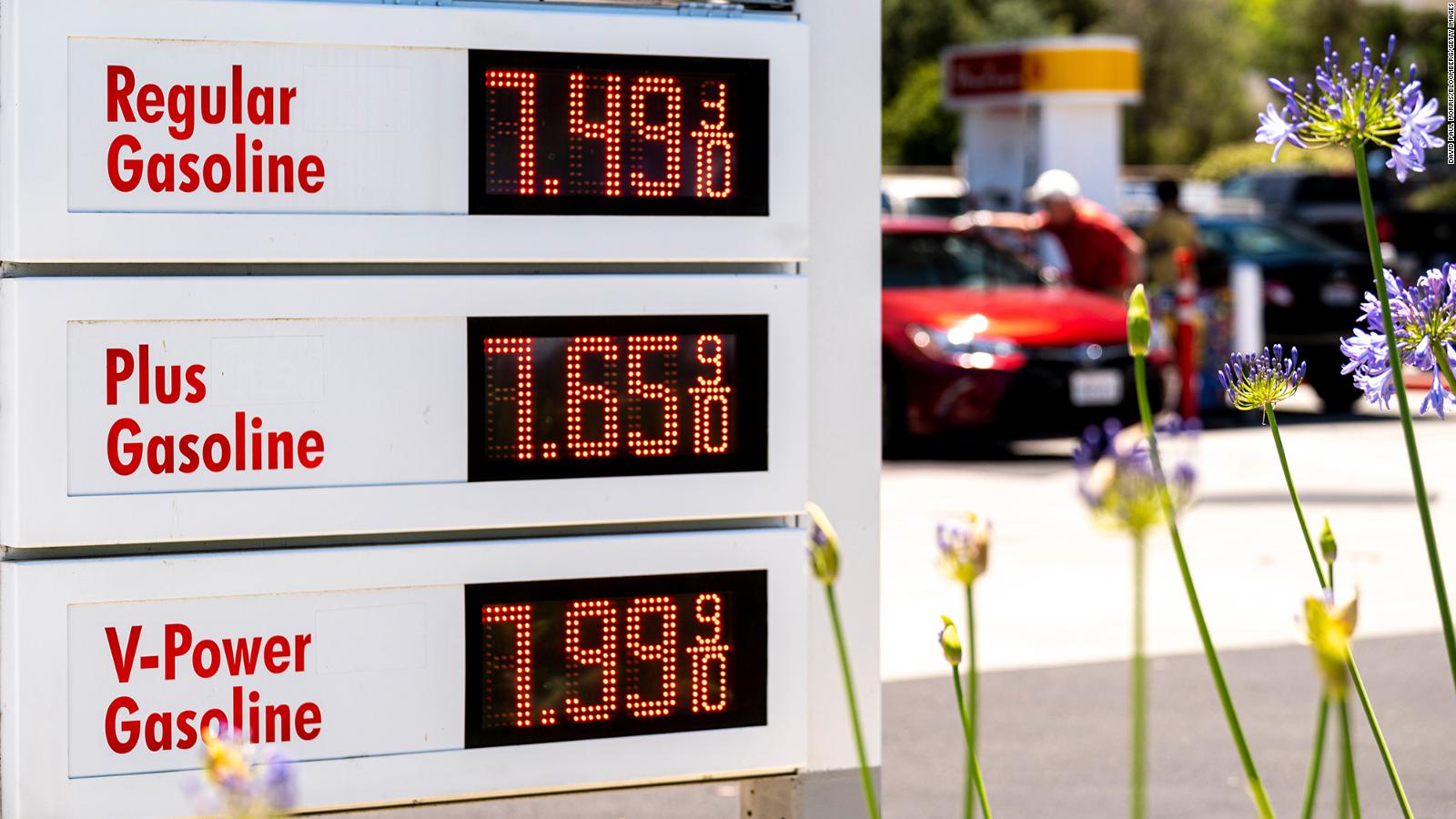Wall Street predicts that gasoline will be more expensive 1:03
New York (CNN Business) --
As gas prices continue to rise, drivers are glaring at gas station price boards every time they fill up.
The national median price on Tuesday was just under $5.02 a gallon, according to the American Automobile Association (AAA).
Prices are even higher in some states.
California had the highest median price in the country, at $6.44 a gallon.
But why does the price of a gallon of gas always end up at 9/10 of a cent on station price boards?
No other retailer advertises their prices in fractions of a cent.
Pennies have so little value today that people even throw them away or leave them in boxes instead of pocketing them.
It may seem unusual, or even unnecessary, but there's a long story -- and subtle marketing strategy -- behind gas prices ending at 9/10 of a cent.
Fractional pricing first appeared in the early 20th century, when states began taxing gasoline sales to help build and maintain highways.
advertising
Back then, taxes were collected in tenths of a cent and passed directly to drivers by gas stations, explains Ed Jacobson, a former gas station owner who now runs the Northwoods Petroleum Museum in Three Lakes, Wisconsin.
But why not charge a penny?
At that time, the average cost of gasoline was about 10 cents per gallon.
So adding a penny was a big deal, especially for cash-strapped drivers during the Great Depression.
Instead of rounding up, which would have been a 10% increase, gas stations added the fraction of a cent.
The 10 states with the most expensive gasoline in the US
In the 1950s, with the development of the interstate highway network and the posting of prices on large billboards, most gas stations began to set prices at 9/10 of a cent, rather than a smaller fraction .
It was a way to maximize sales, says Jacobson.
They are "squeezing the dollar as much as they can," he said.
Pricing ending in 99 cents, known as "just below pricing," is a common marketing tool used to make consumers feel like they're getting a good deal, said Robert Schindler, a marketing professor at the of Rutgers-Camden Business, which researches retail prices and how shoppers crunch the numbers.
"For consumers, a price of 19.9 cents seems much lower than a price of 20," says Schindler.
Gas station owners now have programs that can help them set prices, said Tom Kloza, global director of energy analysis for OPIS, which tracks gasoline prices at 130,000 stations across the country.
Many gas station owners would prefer their prices to be a tenth of a cent below a uniform dollar amount, rather than 9/10 of a cent above.
“A lot of small gas station owners will tell you that they price based on their perception,” Kloza explains.
"They'll tell you there's a big difference if it's $4,999 or $5,009. Drivers don't want to see that $5."
Although AAA's national median price is now above $5 a gallon for the first time on record, the most common price for a gallon of regular gasoline is still $4,999, according to OPIS data.
The average price of gasoline in the US reaches US$ 5
There have been occasional attempts to end fractional gasoline prices.
In 1985, Iowa banned this practice.
"We don't have a dime coin," an Iowa state senator said at the time. "It bothered me for years."
In 1989, however, the state repealed the law and most service stations returned to fractional prices.
In 2006, Jim Davis, a gas station owner in Palo Alto, California, eliminated the fraction of a cent and rounded his prices down.
According to Davis, the move cost him about $23 a day.
-- Chris Isidore of CNN Business contributed to this report.
Gasoline price increase

